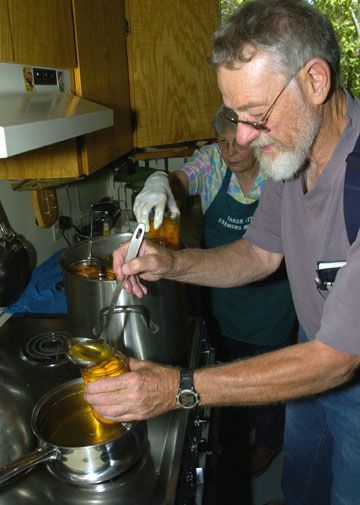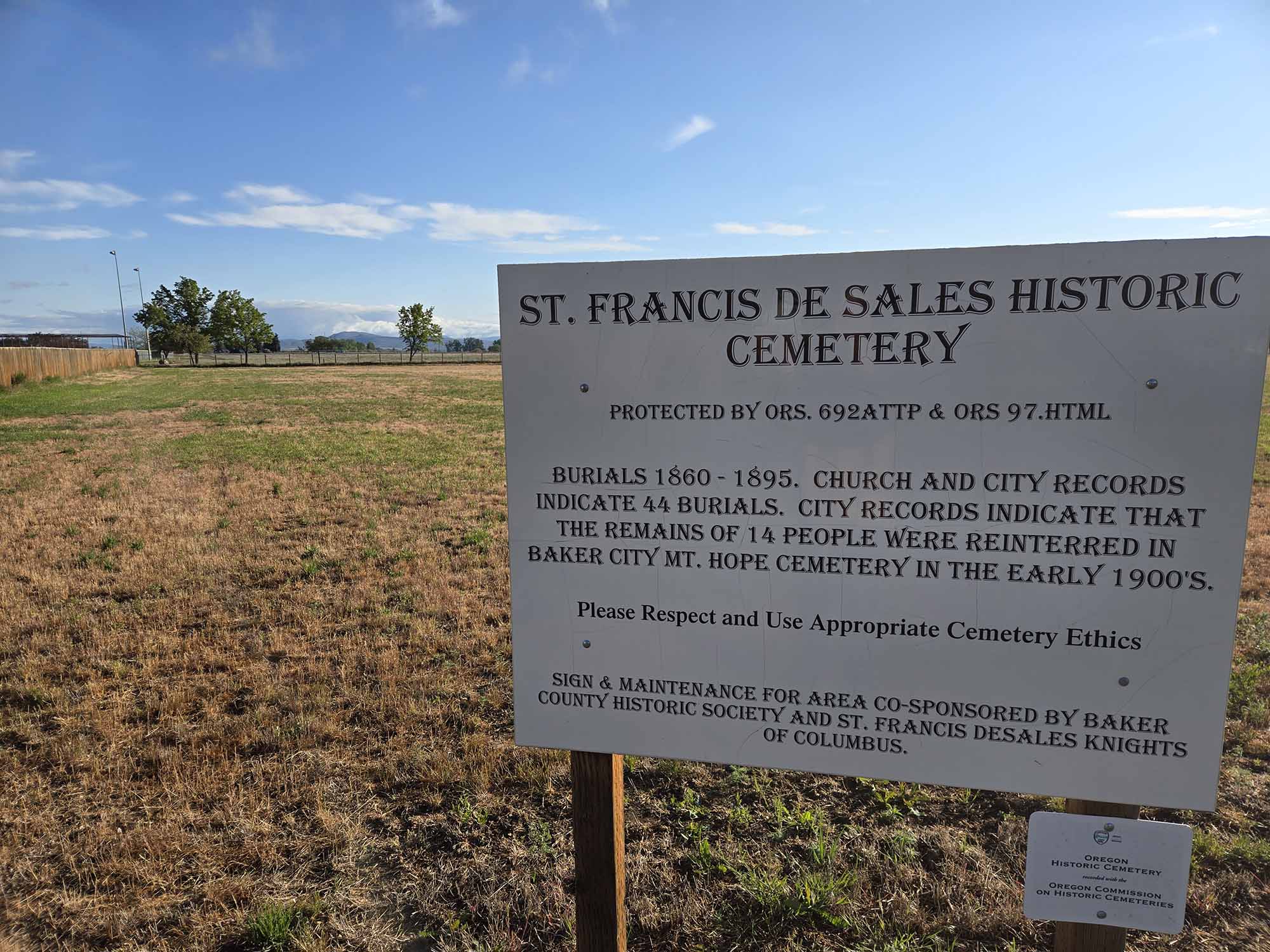Planting, harvesting, and helping the co-op grow
Published 2:38 pm Wednesday, September 3, 2008

- Ramon and Carolyn Lara are preserving jars and jars of apricots this summer because their backyard tree is loaded with the fruit. They try to keep at least a two-year supply of preserved fruit because some years donât give a good yield. (Baker City Herald/S. John Collins)
Ramon and Carolyn Lara hardly even pause their conversation as they
Trending
preserve apricots – a process so familiar to their summer lives it’s
second nature.
“That’s the background we were from,” says Carolyn, 69, as she pits a bucket full of apricots picked from their own tree.
Trending
Beside her, Ramon, 70, keeps watch over the jars heating in the water bath.
Then they sit a spell to visit because this canning business takes time – 22 minutes of boiling, to be exact.
When the water starts bubbling, Ramon sets a timer and the Laras head outside to give a tour of their garden.
This green space measures 82-by-50 feet and is neatly divided into
plots for carrots, peas, raspberries, blackberries, pole beans, squash,
peppers, tomatoes and blue corn they dry and grind for cornmeal.
They also have fruit trees – apricot, plum and apple.
Just a few weeks ago they turned a crop of apples into 63 jars of applesauce – most to store for the winter.
“But we ate a bunch,” Carolyn says with a smile.
They try to have at least two years worth of preserved food.
“In case there’s a bad year,” Carolyn says.
“And there usually is – it cycles,” Ramon adds. “At least every other year we don’t get apricots.”
This is a good year, though, with apricot trees all around Baker City loaded with the sweet orange fruit.
From their own trees the Laras can apricot halves, and also make nectar they drink with “some ice, maybe a squeeze of lemon.”
The vegetables they eat fresh, except for occasionally turning cabbage into sauerkraut.
“We’ll make kraut out of the late ones,” Carolyn says. “It just takes time – a little industrious chopping.”
Over the years they’ve picked up equipment at yard sales to supplement their own canning supplies.
Producing their own food is ingrained from childhood – Carolyn’s family raised hogs and chickens and a vegetable garden, and got milk from the neighbor to drink fresh and make butter.
And she well remembers lending a hand.
“My folks were all into letting the kids help,” she says. “We felt pretty important helping.”
Back then they ate the freshest food, and that habit is a hard one to break.
“We try to eat in season, or preserve,” Carolyn says.
Their typical is this: “veggies first, then fruit. Meat last.”
The meat they eat comes from Double Diamond Ranch in Medical Springs, where Vicki and Paul Wares raise organic, grass-fed beef and lamb.
“We appreciate the way they raise it,” Carolyn says.
The Laras are also involved in Oregon Rural Action, which focuses on local and sustainable resources.
The Laras moved to Baker City in 1967, and Ramon worked for the Forest Service.
Their next big venture? The inception of the Baker Food Co-op.
Well, first it was just a bunch of women who piled into the Laras’ yellow 12-passenger Ford van go pick fruit, or make a trip to the Mount Emily Food Co-op in La Grande.
“We’d go down there with our grocery lists and fill everyone’s order,” Carolyn says.
The allure was buying in bulk.
“We could save money buying by volume,” she says. “A 50-pound bag was cheaper than buying by the pound.”
An idea was born.
“I knew I wanted to have a co-op,” she says.
Soon they started buying extra, and The Salvation Army offered to share the food bank space so they could store their bulk food items.
In 1978, the organization moved to Court Street and incorporated into Greater Baker Foods. In 1989 it moved to the current location, 2816 10th St.
Along the way, the store began stocking vitamins and supplements, and specialty items for those with allergies (such as gluten-free products).
“It’s a lot to learn,” Carolyn says. “It started as people asked for it, and we could find it.”
The Laras are still active in the co-op, and volunteer every Thursday morning.
The food co-op, by the way, operates almost solely on volunteer staff and the membership, which is a one-time payment of $25.
The current membership is about 4,300.
“And we’re signing up anywhere from 15 to 20 new members each month,” said Valarie Tachenko, who has been president of the co-op since 1998.
Members receive a 5 percent discount, and that discount grows the more you volunteer: two to three hours a month nets a 15 percent discount; four to six is 20 percent; seven to nine hours is 25 percent and volunteering 10 or more hours per month results in a 30 percent discount.
Volunteers can choose a variety of positions, including cashier, truck crew, packaging, stocking, pricing, cleaning, ordering, calling members with announcements or doing handyman projects around the store.
Tachenko estimates that about 75 members are active volunteers, and another 150 to 175 work on a less regular basis.
The next step for the co-op is to build a new store on a lot located several blocks north on Tenth Street. The co-op is currently raising money for that project in three ways: donations; a “Buy a Brick” campaign; and a member loan program.
The loan program works like this: members can loan money (the minimum is $1,000) to the co-op, then set the interest rate and the lending period. The member then receives interest payments each month, and will be repaid the entire amount at the end of the period.
“Our money can stay local and it’s something they believe in,” Tachenko said.
The goal is to raise $50,000 from members.
“We have to show member commitment before we apply for grants,” Tachenko said.
She said they also would like to form a non-profit organization under the co-op, which would open up even more grant opportunities.
For more information about the co-op, or the building project, call 523-6281.









